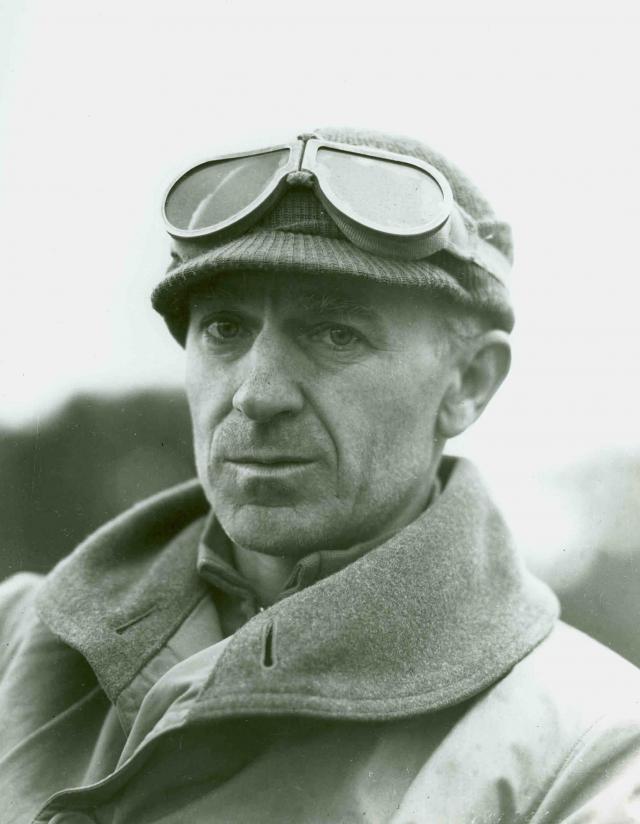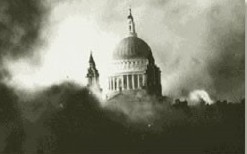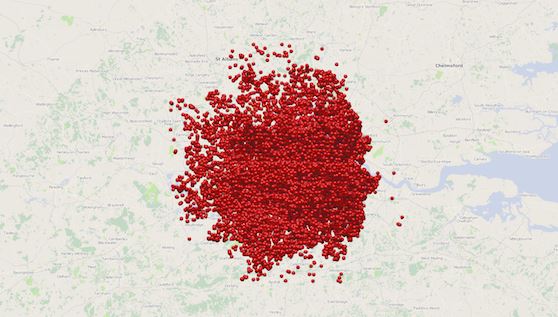|
|
||
|
||
|
Privacy Policy | Editorial Policy | Profit Policy | Join the Association | List of Members | Contact us | Index | Links |
||
|
Back Go to page: 1 2 3 4 5 6 7 8 9 10 11 12 13 14 15 16 17 18 19 20 Forward
|
||
|
Contents:
|
||
|
The other week I unselfishly gave up a day and at great expense to myself, drove all the way up to the Sunshine Coast from Brisbane to be with the lads who were remembering their time spent in Vietnam. Most of the blokes were Army and consequently lesser heroes than my good self, but even so, I was sure they would welcome my presence in their midst. A RAAF presence always cheers up the Army bods, makes their day so to speak.
I went to great pains to mask the Radtechitis before leaving the house, I’ve found liberal splashes of Old Spice can at times hide the alluring attraction of that hypnotic enchantment so I applied half a bottle of Procter and Gamble’s grooming product to my person before leaving and made sure I wore very conservative clothing so as not to attract undue attention..
The Safari suit was at the cleaners so I was forced to wear the purple corduroy trousers with my tan RM Williams calf length boots and upon admiring myself in the full-length mirror, was confident I would blend in and not stand out. Arriving at Maroochydore, the lads insisted I accompany them to a luncheon, which I got the feeling was being held in my honour. I was rightly embarrassed at all the attention so as soon as it was polite, I snuck away and sat in a dark corner of the room, away from the crowd giving them a chance to talk amongst themselves and not devote all their time admiring me.
I had masked the Radtechitis quite well, no one had noticed they had a Radtech in their midst, a RAAF person, yes, but up until now I had hidden the Radtechitis quite comfortably and had managed to elude the uncontrollable admiration that always follows the revelation. However, little did I know, there was a slip up.
Being a most sensible and law-abiding driver, I decided not to imbibe in alcoholic drinks so I stuck to enjoying one or two cold Pepsi Maxes. I’d finished one can and was onto my second when a steward cleared my milk crate, at which I was sitting, of the empty one and tossed it into the recycle bin. Some of that elusive Radtechitis must have been transferred to the can as unbeknown to me, a tiny whiff of it floated up and away on the sea breeze and headed for the shopping plaza.
At about this time, two lovely young ladies were shopping for rouge and vinyl hand-bags in one of the majors in the Plaza when they detected that minute amount of Radtechitis in the air. Immediately raw instinct took over, conscious thought was discarded, hand-bags were dropped and they began running full pelt on the spot, turning in circles with heads tilted back, knees lifted high and noses searching for the source.
Eventually they detected the source, traction was obtained and they fled from the Plaza scattering young and old in their wake and headed for the RSL Club. They sped across the busy highway, with legs flashing and hair streaming behind them, causing a major pile-up of 30 or so cars that had nose to tailed avoiding them and roared into the Club and bolted up the stairs to the convention centre. They found me in the corner blissfully unaware that some Radtechitis had escaped my person and immediately draped themselves upon my person in an attempt to obtain some.
I was forced to endure this intrusion for 40 minutes or so before I was able to free myself.
Such is the burden a Radtech must endure. (And just to show you it wasn't a fluke - run your mouse over the pic)
These two lovely, fun loving girls, Kim Dung on the left and Ngan Dai on the right are members of the Vietnamese community and live in Brisbane. They constantly and unselfishly give of their time to attend and brighten up Veterans’ get togethers at events all over the place and for that we thank them very much.
We’ll obviously, and hopefully, see them again soon.
|
||
|
Have you ever listened to someone for a while and wondered “who ties your shoe-laces for you?”
|
||
|
Mike Gaham sent us the following.
WHAT WE WEREN'T TOLD ABOUT THE THREAT TO FAMILIES.
The response of the current Defence hierarchy to any suggestions Butterworth activities were ‘war like” in the mid 1970’s is that there is no evidence to that effect. Documents such as THIS one and the experiences some of us had in that period would suggest the Defence hierarchy can be typified by THIS graphic.
See THIS document and THIS one too.
These two paragraphs below have been cut from the 1975 Joint Intelligence Organisation's document 'The Security of Air Base Butterworth'.
Think about the implications of these. First, the report identified a 'distinct threat' to the Base, Australian Personnel and their families. Because of the risks associated with sabotage within the Base the Communists could choose targets off base - including married quarters.
The document also considers the possibility of the Communists murdering or kidnapping 'important foreign residents'. If this path was taken they had no way of knowing if Australian personnel and their families 'would be primary targets in preference to other foreigners in Malaysia ...'
How would they know if the communists had decided on this course of action until someone had been murdered or kidnapped?
Our families. Doesn't it make you feel good.
Pick the true statement:
|
||
|
|
||
|
Para 1.
(d) Sabotage, by the planting of delayed-action explosives, booby-traps, and other similar devices designed to damage equipment and to injure personnel, by members of subversive groups or sympathetic locally-employed civilians or contract personnel. In this case targets outside the Base might be chosen, as there would not be as much danger of detection by security patrols. Minor acts of sabotage committed within the Base by such personnel would result in their detection and in a tightening of security with no significant gains for the Communist Terrorist Organisation (CTO) cause.
Nevertheless, the use of booby-traps and minor acts of sabotage by subversive groups are relatively common throughout Peninsular Malaysia and pose a distinct threat, both to the Base and to Australian personnel and their dependants.
(e) Acts of terrorism against RAAF married quarters adjacent to the Base (Tan Sai Gin and Rubina Park).
Para 2
26. The CTO could easily adopt tactics used by other terrorist
organizations, notably those in South America, of murdering or kidnapping
important foreign residents in order to embarrass the Government publicly
and to obtain concessions, such as the release of political prisoners, as
part of a wider campaign of urban terrorism. The Communist Party of Malaya (CPM)
Central Committee faction is concerned mainly with controlling the rural
The increase in the numbers of incidents in 1975 points in this direction, but it is doubtful whether the factions have the resources to conduct an extended urban campaign, although they have demonstrated a capability for coordinated action throughout Peninsular Malaysia. If this situation did arise, however, Australian personnel and their dependants stationed at Butterworth could be threatened. It is impossible to say whether they would be primary targets in preference to other foreigners in Malaysia, such as members of diplomatic missions.
We think there is a long fight ahead before any recognition of the confrontation being declared warlike. BUT – there’s THIS.
|
||
|
Be careful when you follow the masses. Sometimes the “M” is silent
|
||
|
On the 19th December 1945, 35 Squadron lost Dakota A65-83 (VH-CIZ) with the loss of 25 lives. It was an Aeromedical flight returning soldiers from Ambon to Darwin and the aircraft went missing in bad weather. It was the most tragic event in 35 Squadron’s history
At the conclusion of WWII a RAAF aero- medical evacuation aircraft, Dakota A65-83 carrying 25 ADF personnel, disappeared whilst on route from Morotai in present day Indonesia to Darwin, Australia.
As the result of a request by the family of one of the missing soldiers, Uncovered War Casualties – Australia (UWC-A) looked into claims that the search for the missing Dakota may have missed vital areas between Ambon and Darwin where the plane may have crashed. All available information was re-examined, including evidence about radio messages which were attributed to the missing plane after the last known received message.
Extensive searches in December 1945, after the plane went missing, were made over 18 days and included no less than 52 individual search and rescue flights, a dedicated patrol of several naval vessels and every out-going aircraft from Darwin for the 10 days after the plane went missing was briefed to keep a look out for the missing plane and its crew.
The search was extensive, covering an area of 14,620 square nautical miles and in line with what would have been done if the plane went missing today.
The flight departed Morotai for Darwin, via Ambon. It arrived at Ambon at 08:50 and the captain decided to await the arrival of another aircraft from Darwin to find out more about the weather conditions en route. Weather was poor but the plane departed from Ambon at 10:40. Approximately one hour into the flight Darwin Aeradio received a message from the flight stating that they wished to place a message. That was the last ever heard from the aircraft.
The UWC-A investigation determined that based on the planes last known location, the weather and its direction of travel, all possible search areas had been covered by the original search parties in 1945. It was considered unlikely, based on all the evidence to hand, that the plane attempted to return to Ambon or to divert to another land mass. The most likely conclusion is that the plane crashed at sea.
The case remains open.
UWC-A is asking that any one who may be related to the personnel listed on the manifest to contact UWC-A here army.uwc@defence.gov.au and register as next of kin.
The evidence suggests that the aircraft crash landed on an island or ditched in the Banda/Timor sea next to one. There were signals coming from the aircraft days after it went missing which seemed to indicate the passengers and crew knew where they were but the RAAF just couldn't find them. Bearings taken on one signal sent by CIZ were taken from Darwin (331-333 deg) and the subsequent search was based around that but to no avail. Newspaper reports from the time insisted that the RAAF keep up the search until CIZ was found and in some cases were quite scathing of the Minister for Air for not doing enough.
Perhaps one day the secret of missing A65-83 will be revealed – perhaps!.
|
||
|
I was in a Coffee Club recently when I suddenly realized I desperately needed to fart. The music was really, really loud so I timed by farts with the beat of the music. After a couple of songs and a couple of rippers, I started to feel better. I finished my coffee and noticed that everyone was staring at me, and suddenly I remembered I was listening to my iPod. Ooops!
|
||
|
The appearance of German bombers in the skies over London during the afternoon of the 7th September, 1940 heralded a tactical shift in Hitler's attempt to subdue Great Britain. During the previous two months, the Luftwaffe had targeted RAF airfields and radar stations for destruction in preparation for the German invasion of the island. With invasion plans put on hold and eventually scrapped, Hitler turned his attention to destroying London in an attempt to demoralize the population and force the British to come to terms. At around 4:00 PM on that September day, 348 German bombers escorted by 617 fighters blasted London until 6:00 PM. Two hours later, guided by the fires set by the first assault, a second group of raiders commenced another attack that lasted until 4:30 the following morning.
This was the beginning of the Blitz - a period of intense bombing of London and other cities that continued until the following May. For the next consecutive 57 days, London was bombed either during the day or night. Fires consumed many portions of the city. Residents sought shelter wherever they could find it - many fleeing to the Underground stations that sheltered as many as 177,000 people during the night. In the worst single incident, 450 were killed when a bomb destroyed a school being used as an air raid shelter. Londoners and the world were introduced to a new weapon of terror and destruction in the arsenal of twentieth century warfare. The Blitz ended on the 11th May, 1941 when Hitler called off the raids in order to move his bombers east in preparation for Germany's invasion of Russia.
Ernie Pyle, an American journalist, was one of World War Two's most popular correspondents. His journalism was characterized by a focus on the common soldier interspersed with sympathy, sensitivity and humour. He witnessed the war in Europe from the Battle of Britain through the invasion of France. In 1945 he accepted assignment to the Pacific Theatre and was killed during the battle for Okinawa. He describes a night raid on London in 1940:
"It was a night when London was ringed and stabbed with fire. They came just after dark, and somehow you could sense from the quick, bitter firing of the guns that there was to be no monkey business this night. Shortly after the sirens wailed you could hear the Germans grinding overhead. In my room, with its black curtains drawn across the windows, you could feel the shake from the guns. You could hear the boom, crump, crump, crump, of heavy bombs at their work of tearing buildings apart. They were not too far away.
Half an hour after the firing started, I gathered a couple of friends and went to a high, darkened balcony that gave us a view of a third of the entire circle of London. As we stepped out onto the balcony a vast inner excitement came over all of us, an excitement that had neither fear nor horror in it, because it was too full of awe. You have all seen big fires, but I doubt if you have ever seen the whole horizon of a city lined with great fires - scores of them, perhaps hundreds.
There was something inspiring just in the awful savagery of it.
The closest fires were near enough for us to hear the crackling flames and the yells of firemen. Little fires grew into big ones even as we watched. Big ones died down under the firemen's valour, only to break out again later. About every two minutes a new wave of planes would be over. The motors seemed to grind rather than roar, and to have an angry pulsation, like a bee buzzing in blind fury.
The guns did not make a constant overwhelming din as in those terrible days of September. They were intermittent - sometimes a few seconds apart, sometimes a minute or more. Their sound was sharp, nearby and soft and muffled, far away. They were everywhere over London.
Into the dark shadowed spaces below us, while we watched, whole batches of incendiary bombs fell. We saw two dozen go off in two seconds. They flashed terrifically, then quickly simmered down to pin points of dazzling white, burning ferociously. These white pin points would go out one by one, as the unseen heroes of the moment smothered them with sand. But also, while we watched, other pin points would burn on, and soon a yellow flame would leap up from the white centre. They had done their work - another building was on fire.
The greatest of all the fires was directly in front of us. Flames seemed to whip hundreds of feet into the air. Pinkish-white smoke ballooned upward in a great cloud and out of this cloud there gradually took shape - so faintly at first that we weren't sure we saw correctly - the gigantic dome of St. Paul's Cathedral. St. Paul's was surrounded by fire, but it came through. It stood there in its enormous proportions - growing slowly clearer and clearer, the way objects take shape at dawn. It was like a picture of some miraculous figure that appears before peace-hungry soldiers on a battlefield.
The streets below us were semi-illuminated from the glow. Immediately above the fires the sky was red and angry and overhead, making a ceiling in the vast heavens, there was a cloud of smoke all in pink. Up in that pink shrouding there were tiny, brilliant specks of flashing light-antiaircraft shells bursting. After the flash you could hear the sound.
Up there, too, the barrage balloons were standing out as clearly as if it were- daytime, but now they were pink instead of silver and now and then through a hole in that pink shroud there twinkled incongruously a permanent, genuine star - the old - fashioned kind that has always been there.
Below us the Thames grew lighter, and all around below were the shadows - the dark shadows of buildings and bridges that formed the base of this dreadful masterpiece.
Later on, I borrowed a tin hat and went out among the fires. That was exciting too; but the thing I shall always remember above all the other things in my life is the monstrous loveliness of that one single view of London on a holiday night - London stabbed with great fires, shaken by explosions, its dark regions along the Thames sparkling with the pin points of white-hot bombs, all of it roofed over with a ceiling of pink that held bursting shells, balloons, flares and the grind of vicious engines. And in yourself the excitement and anticipation and wonder in your soul that this could be happening at all.
These things all went together to make the most hateful, most beautiful single scene I have ever known."
One can only imagine the terror those people in London experienced during WW2. And it wasn’t just London that copped it, most of the bigger cities in the UK were in for a pounding from the German bombs (see HERE) but London was on the receiving end of most of them.
The pic at right shows the cluster dropped on London – if you click it, it will open another map which you can expand by rolling your mouse wheel to see where they fell, just imagine that happening to Sydney, Brisbane or one of our major cities today. Could or would we cope??
It’s just unthinkable, though today, it would need only 1 bomb to do all the damage done by the 100 tons dropped by Germany.
Too scary to even think about.
|
||
|
When you’re dead you don’t know you’re dead, it’s only difficult for others. It’s the same way when you’re stupid.
|
||
|
|
||
|
|
||
|
Back Go to page: 1 2 3 4 5 6 7 8 9 10 11 12 13 14 15 16 17 18 19 20 Forward |
||
|
|



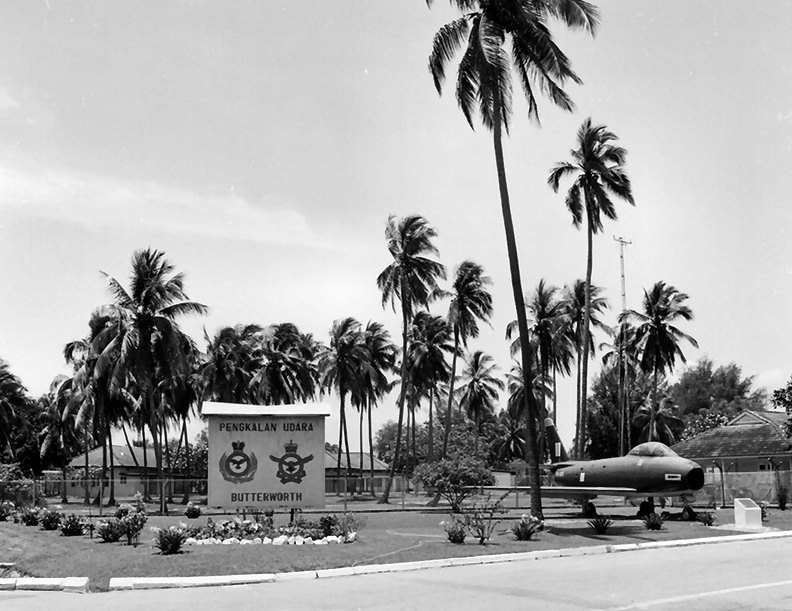
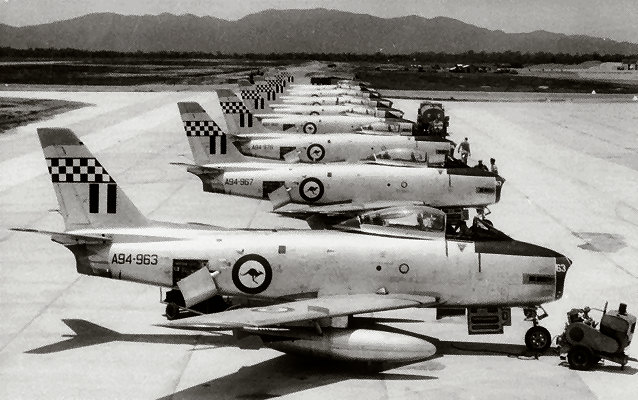
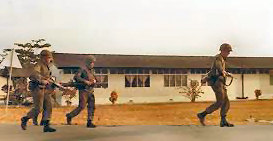 areas in line with the orthodox Maoist doctrine of revolutionary warfare,
and it is unlikely that the Moro National Liberation Front (MNLF) would be
capable of conducting a widespread and sustained terror campaign against
foreign interests in urban areas. There have been indications, however, that
the Marxist—Leninist and Revolutionary factions differ from the Central
Committee faction over this question and might seek to implement a campaign
of urban guerrilla warfare.
areas in line with the orthodox Maoist doctrine of revolutionary warfare,
and it is unlikely that the Moro National Liberation Front (MNLF) would be
capable of conducting a widespread and sustained terror campaign against
foreign interests in urban areas. There have been indications, however, that
the Marxist—Leninist and Revolutionary factions differ from the Central
Committee faction over this question and might seek to implement a campaign
of urban guerrilla warfare. 